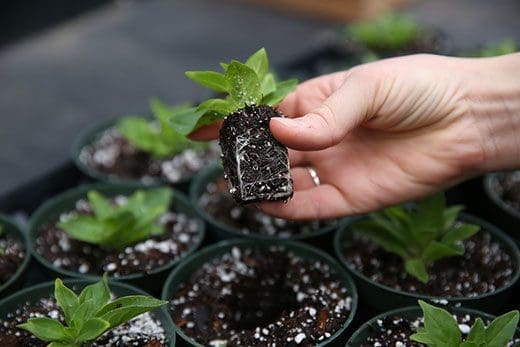By Maddy Rohr, K-State Research and Extension news service
Manhattan, KS— The temperatures are cold, snow is on the ground and gardeners are stuck inside. Fortunately, starting seeds indoors is a great kick-start to the spring garden.
“Obtain your seeds from a reputable source, including garden centers and seed catalogs,” said Kansas State University horticulture expert Ward Upham. “If choosing seeds from a business that does not specialize in plants, pay special attention to the package date to make sure the seed was packaged for the current year. Though most seeds remain viable for about three years, germination decreases as seed ages.”
Upham said there are two pieces of information that need to be known to determine the date to seed transplants: the target date for transplanting outside and the number of weeks needed to grow the transplant. The Jan. 4 K-State Horticulture Newsletter includes a table to help gardeners understand these timelines.
“Do not use garden soil to germinate seed as it is too heavy and may contain disease organisms. Use a media made especially for seed germination,” Upham said.
Seeds must be kept moist in order to germinate, Upham added. He recommends using a clear plastic wrap over the container to trap moisture and reduce the amount of watering. Remove the wrap when seedlings emerge.
“All plants require adequate amounts of light once emergence occurs. South facing windows may not provide adequate amounts and so fluorescent or LED fixtures are often used,” Upham said.
Upham suggested suspending fluorescent lights 2-4 inches above the top of the plants. LED lights are more variable so be sure to follow the manufacturer’s recommendations. Regardless of the type of light used, leave the lights on for 16 hours each day, he said.
“The temperature best for germination is often higher than what we may find in our homes especially since evaporating moisture can cool the germination media,” Upham said.
He recommends moving containers closer to the ceiling or using a heating mat.
“After plants have germinated, they can be grown at a cooler temperature (65-70 degrees during the day and 55-60 degrees at night),” Upham said.
Upham and his colleagues in K-State’s Department of Horticulture and Natural Resources produce a weekly Horticulture Newsletter with tips for maintaining home landscapes and gardens. The newsletter is available to view online or can be delivered by email each week.
Interested persons can also send their garden and yard-related questions to Upham at wupham@ksu.edu, or contact your local K-State Research and Extension office.













